ICYMI: Highlights from the week that was Nov. 27 – Dec. 3
No one can keep up with everything, so let us do it for you. We’ll gather the top Smithsonian stories from across the country and around the world each week so you’ll never be at a loss for conversation around the water cooler.
Thanksgiving reminded us to be grateful for delicious food and the kindness of strangers. And while the Post’s art critic may have been lukewarm, there were plenty of other hot topics this week.
Is it possible to make Noguchi boring? Almost.
The Washington Post, Nov. 28
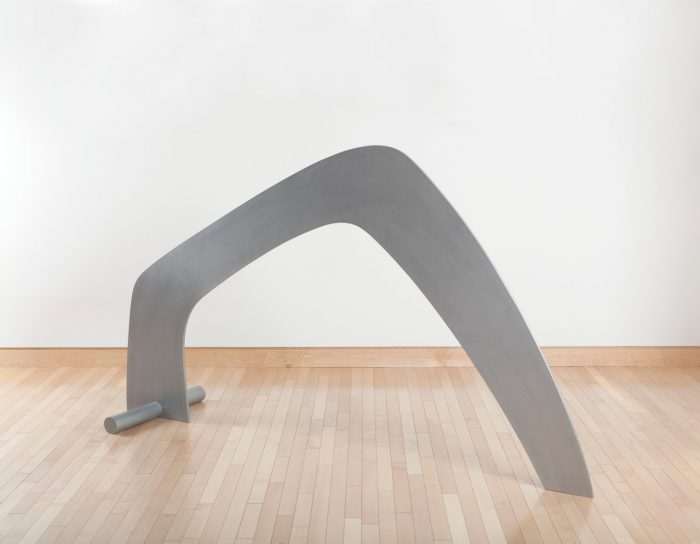
Isamu Noguchi’s 1958 aluminum “Untitled,” from the exhibition at the Smithsonian American Art Museum. (Isamu Noguchi/The Noguchi Foundation and Garden Museum)
When one despairs of the present, neither the past nor the future offers much consolation. The former is full of warnings unheeded, and precedents too terrifying to contemplate; and the latter inspires yet more anxiety, whether it will come at all, whether anyone will be around to learn the lessons of this fleeting thing we call “now.” An exhibition at the Smithsonian American Art Museum takes up the theme of past and future in the work of Isamu Noguchi, the great Japanese American sculptor whose influence on American art (and especially landscape design) is subtle but pervasive and incalculable. Read more from Philip Kennicott for the Washington Post.
A Navajo Chef Looks to History in His Homage to Native Cuisine
The New York Times, Nov. 25
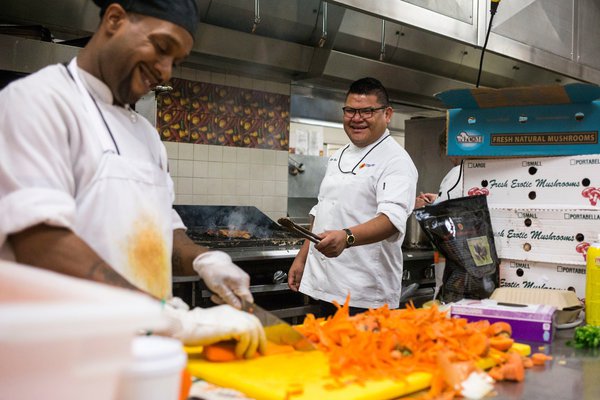
Freddie Bitsoie, right, the executive chef of the Mitsitam Native Foods Cafe at the National Museum of the American Indian, joked with a prep cook, Jamal Gomez, in the kitchen last week. (Al Drago / The New York Times)
It took 12 years for the nation’s pre-eminent Native American restaurant to hire its first Native American executive chef. Yet the chef, Freddie Bitsoie, is feeling a more particular pressure.
“I stress a lot about my salmon,” he said with a grin. “I think about it even when I’m at home. I think about my work about 23 hours a day, even while I’m sleeping.” Read more from Noah Weiland for The New York Times.
Museum Cafeteria Serves Black History and a Bit of Comfort
The New York Times, Nov. 28
Chefs talk about pressure all the time: brutal shifts when the wait for a table is an hour long, an important critic is in the restaurant and your best sous-chef just sliced her finger to the bone.
But they don’t know pressure like the cooks here at the Sweet Home Café inside the National Museum of African American History and Culture. Read more from Kim Severson for The New York Times.
A Giving History: Smithsonian Exhibit Showcases Americans’ Charitable Acts
NPR: All Things Considered, Nov. 29
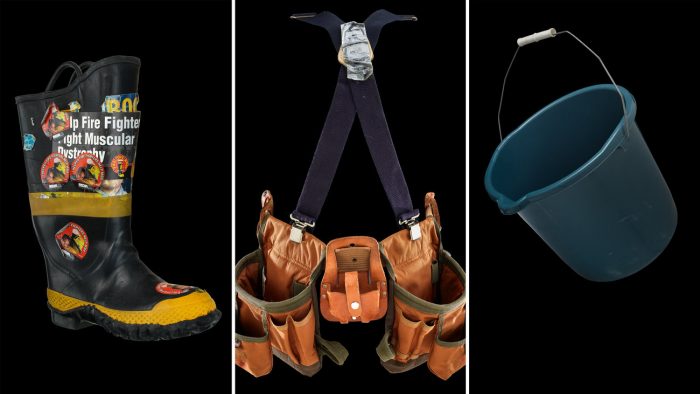
(Left) A firefighter’s boot used to collect money from motorists for the “Fill the Boot” campaign for muscular dystrophy which started in 1954. (Center) A Habitat for Humanity belt was used by a volunteer in rebuilding homes in Louisiana after Hurricane Katrina. (Right) Bucket used by Jeanette Senerchia in 2014 launching the viral ALS Ice Bucket Challenge. (Courtesy of National Museum of American History)
Remember a couple of years ago, when it seemed like we were all one big happy family, Americans of every age and political stripe, joined in common pursuit? Millions of us spent that summer pouring buckets of ice water on our heads, to raise money for amyotrophic lateral sclerosis (ALS), also known as Lou Gehrig’s disease.
Philanthropy has always played a big role in the United States, helping to shape who we are, what we do and how. Now it’s the subject of a new exhibit called “Giving in America” at the Smithsonian’s National Museum of American History in Washington, D.C. Read more from Pam Fessler for NPR’s All Things Considered.
Push for US national Latino museum gathers pace against the clock
Third legislative attempt could pave the way for new Smithsonian institution, but new administration adds extra challenge
The Art Newspaper, Nov. 29
Efforts to establish a branch of the Smithsonian dedicated to Latino culture are gaining momentum after the successful debut of the National Museum of African American History and Culture (NMAAHC) in Washington, DC. Bipartisan legislation was reintroduced in September to create a permanent home for the National Museum of the American Latino in the US capital. Read more from Charmaine Picard for The Art Newspaper.
Antarctic Beetle Species Discovery Doubles As Birthday Gift To Scientists’ Mentor
NPR, Nov. 30
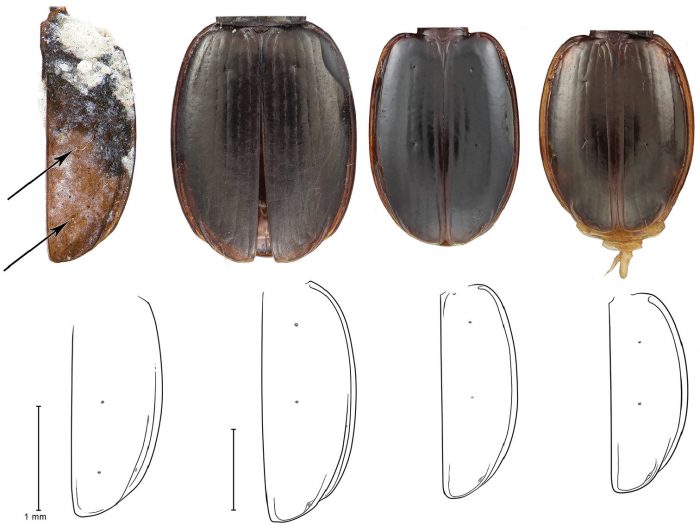
A new species of ground beetle found in Antarctica (left) is named Antarctotrechus balli. The three other beetles are close modern relatives of the ancient species. The line drawings show similarities between the beetles.
Courtesy of Allan Ashworth/North Dakota State University
Millions of years ago, a little beetle lived among beeches and buttercups on a sparely vegetated tundra at the head of a fjord in Antarctica.
The beetle was small — less than a centimeter long — and it was brown with the typical six legs and two antennae attached to a body protected by a hard shell.
The authors of a new paper announcing its discovery, published in the journal ZooKeys, named it Antarctotrechus balli, or A. balli for short. The first part is a combination of the place the specimens were found, and the formal name for its modern relatives. The second part, balli, is for the beetle scientist George Ball, “in celebration of his 90th birthday,” the paper says. Read more from Rebecca Hershier for NPR’s “The Two-Way.”
How to Support the Arts During the Trump Administration
If you’re concerned about the state of arts funding and support under the new incoming administration, then we have some suggestions of what you can do.
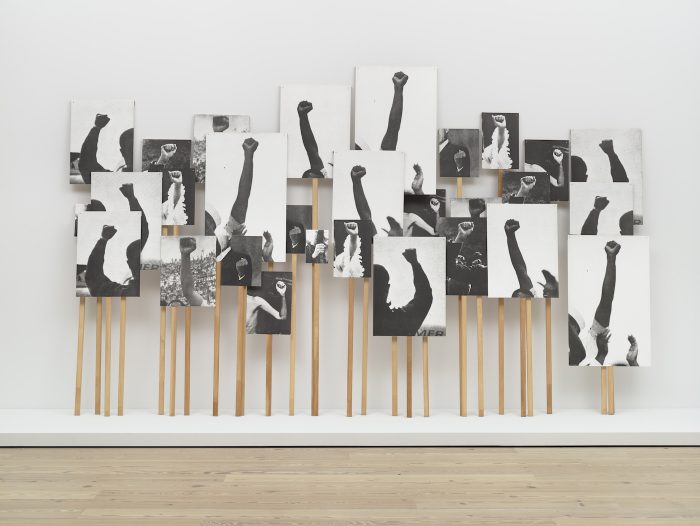
Annette Lemieux, “Left Right Left Right” (1995), 30 photolithographs and 30 pine poles, dimensions variable (Whitney Museum of American Art, New York; purchase, with funds from the Print Committee; courtesy the Whitney Museum of American Art)
Hyperallergic, Nov. 30
If you’re freaked out about how the incoming Trump administration might affect arts and culture — and everything else — in the coming years, you’re in good company. Not a single well-known visual artist endorsed Donald Trump for president during his campaign, and in the two weeks since he was elected, the art world has overwhelmingly responded with shock and grief. The question, now, is where to go from here. Read more from Carey Dunne for Hyperallergic.
After Pearl Harbor, this mail plane had a new mission: Find the attackers
The Washington Post, Dec. 2
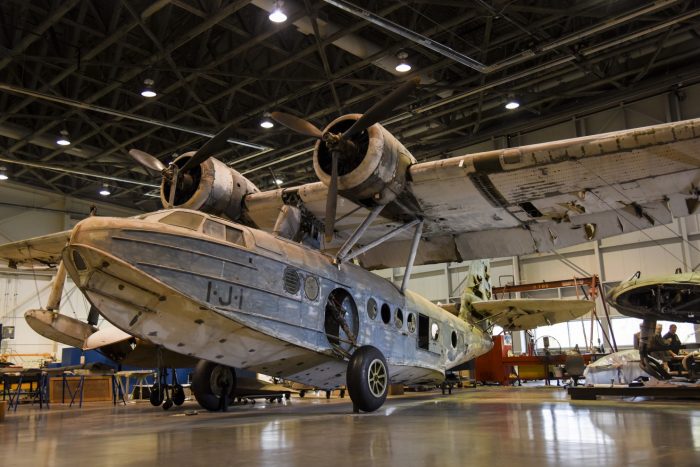
A Sikorsky JRS-1 flying boat sits in the restoration hangar of the Smithsonian National Air and Space Museum in Chantilly, Va. The mail plane was sent out in search of the Japanese fleet after the Pearl Harbor attack. Its only armament: three old rifles, which the crew would have had to fire through the windows. (Jahi Chikwendiu/The Washington Post)
The tattered Pearl Harbor survivor looks every bit of 78, with weathered skin, rusty bones and the faded “U.S. Navy” emblem the old bird got before the war.
Gray from age and years in the service, the veteran of Dec. 7 sits with other World War II antiques, weary and in need of attention.
But with the 75th anniversary of the 1941 attack this week, and commemorations scheduled in Hawaii and around the country, this survivor, like most who were there that day, has a story. Read more from Michael Ruane for The Washington Post.
How the Obamas Changed Washington
Every President and First Lady leave their imprint on our city, in the form of businesses they anointed, say, or people they empowered. The Obamas are no different. Here’s our look at how they shaped the cultural geography of Washington over the last eight years.
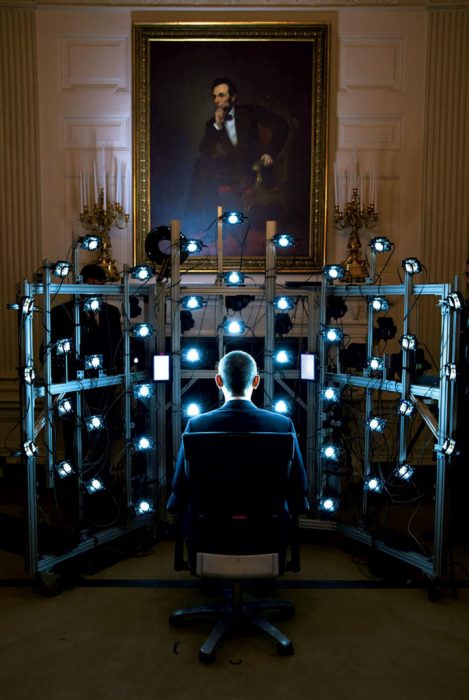
Obama sitting for the Smithsonian team making the first-ever presidential portrait created by 3-D scan, June 9, 2014. Photo by Alamy.
On January 20, while Donald Trump is being sworn in a few blocks up Pennsylvania Avenue, movers will finish carting the Obamas’ possessions out of the White House. The family won’t be going far: The Kalorama Tudor where Barack Obama will begin his retirement is only two miles away. In sticking around while his younger daughter finishes high school, he’ll be the first chief executive in 96 years to remain in the capital. Read more from Elaina Plott for Washingtonian.
Posted: 6 December 2016






